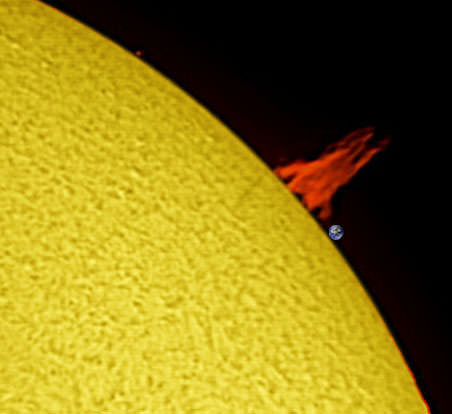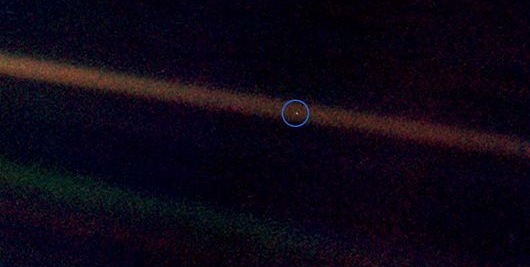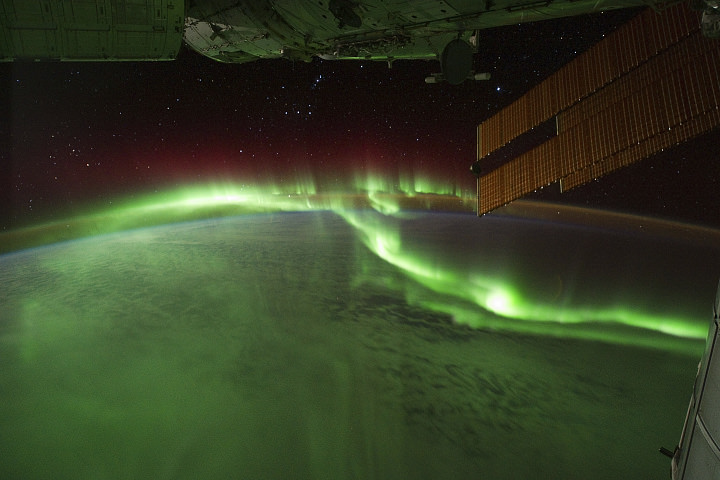NASA put out this video last week and we missed covering it, but this is a very interesting little video that takes you on a narrated global tour of tens of millions of fires detected from space between July 2002 and July 2011. Yes, that’s right, tens of millions of fires on Earth, and these aren’t tiny little campfires — they are big enough to be seen from space. The video was created from new satellite data visualizations, and is combined with satellite views of vegetation and snow cover to show how fires relate to seasonal changes. The research helps scientists understand how fire affects our environment on local, regional and global scales.
Continue reading “As the World Burns: Satellites Watch Fires Around the World”
From the Land of Ice and Snow
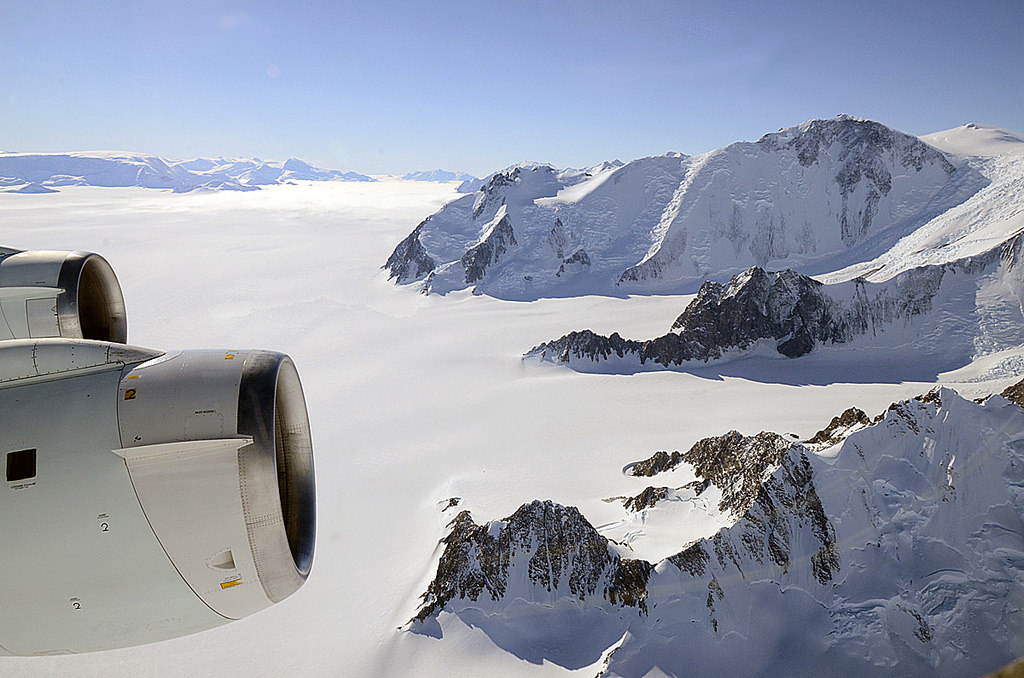
[/caption]
Views from the window of NASA’s DC-8 reveal sweeping expanses of ice and rock as part of the ongoing 2011 Operation IceBridge survey of Antarctica’s ice cover.
Now in its third season, Operation IceBridge is a six-year-long mission to study the dynamics of the Antarctic and Arctic ice sheets. It’s the largest ever aerial survey of the polar ice and will yield valuable data on the state of Earth’s vast reservoirs of frozen water, including the land and sea underneath and how they are being affected by today’s rapidly changing climate.
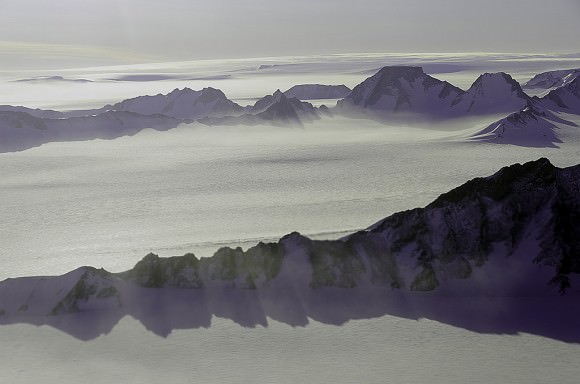
Researchers – like Michael Studinger, who took the incredible photos seen here – fly over Greenland during the months of March through May and over Antarctica in October and November. NASA’s instrument-laden DC-8 flies over these remote locations at a low altitude of about 1,500 feet, often with little or no advance weather data.
98 percent of Antarctica is covered with ice. Information obtained by Operation IceBridge will be combined with satellite data to create the most accurate models possible of Antarctic ice loss and how it will affect future sea level rise.
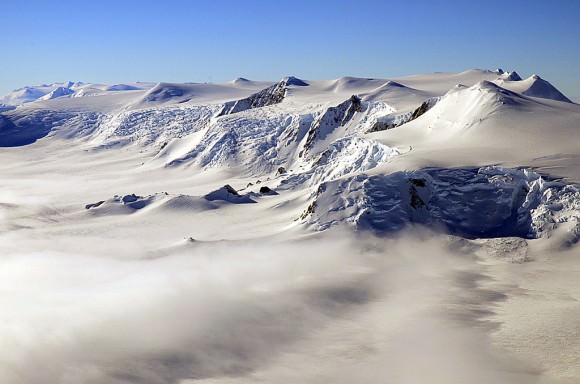
This season’s Antarctic IceBridge campaign features NASA’s DC-8, at 157 feet long the largest plane in the agency’s airborne research fleet, and will also feature the debut of the Gulfstream V (G-V) operated by the National Science Foundation and National Center for Atmospheric Research.
While the DC-8 flies at low altitudes, the G-V will fly above 30,000 feet to utilize its Land, Vegetation and Ice Sensor (LVIS), which makes detailed topographic studies of the surface.
“With IceBridge, our aim is to understand what the world’s major ice sheets could contribute to sea-level rise. To understand that you have to record how ice sheets and glaciers are changing over time.”
– Michael Studinger, IceBridge project scientist at NASA’s Goddard Space Flight Center in Greenbelt, Md.
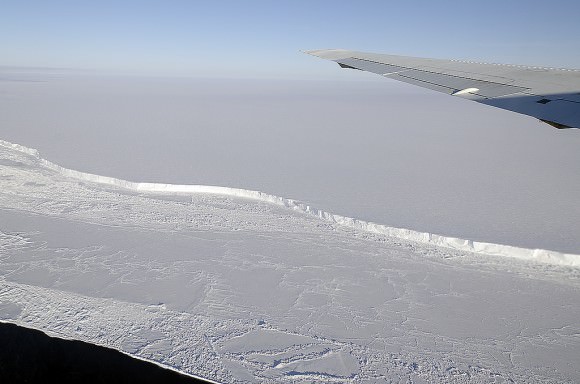
Iceland’s Midnight Sun: a Time-Lapse Treat!
This beautiful time-lapse video was created by photographer Joe Capra during his 17-day solo trek around Iceland in June 2011. A “photographer’s paradise”, summer in Iceland never gets fully dark as the Sun sets around midnight and rises three hours later. The stars don’t even reappear until August!
Continue reading “Iceland’s Midnight Sun: a Time-Lapse Treat!”
Phobos-Grunt: The Mission Poster
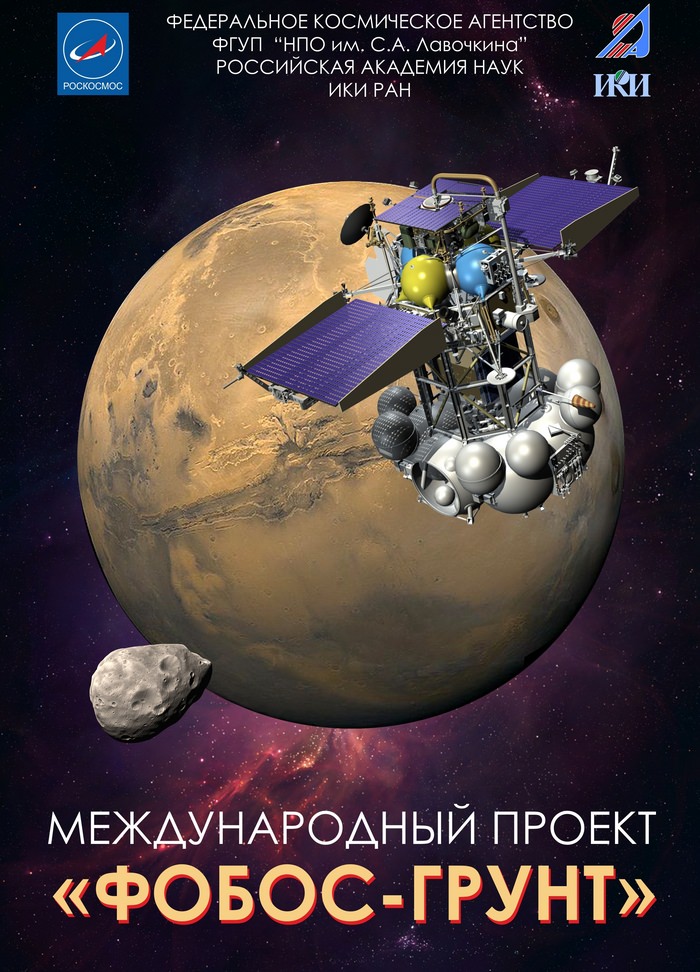
[/caption]
Russia is marking the upcoming blastoff of their dauntingly complex Phobos-Grunt sample return mission to the Martian moon Phobos with the release of a quite cool looking mission poster – see above. Phobos-Grunt translates as Phobos-Soil and is due to liftoff on or about November 7, 2011 from the Baikonur Cosmodrome atop a Zenit rocket.
The holy grail of Mars exploration has long been a sample return mission. But with severe cutbacks to NASA’s budget that goal is realistically more than a decade away. That’s why Phobos- Grunt is so exciting from a scientific standpoint.
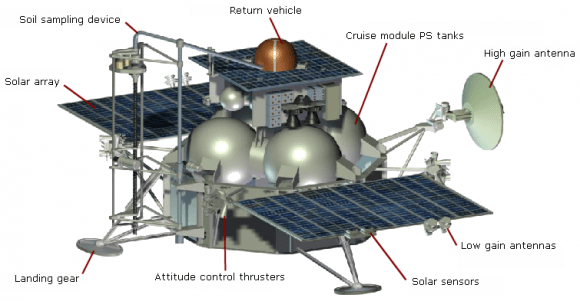
Russia's Phobos-Grunt is designed to land on Mars' moon Phobos, collect soil samples and return them to Earth for study. The lander will also carry scientific instrumetns to study Phobos and its environment. It will travel to Mars together with Yinghuo-1, China's first mission to the Red Planet. Credit: NPO Lavochkin
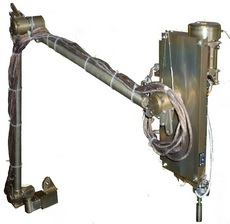
If successful, this audacious probe will retrieve about 200 grams of soil from the diminutive moon Phobos and accomplish the round trip in three years time by August 2014. Scientists speculate that martian dust may coat portions of Phobos and could possibly be mixed in with any returned samples.
Included here are more photos and graphics of the Phobos-Grunt spacecraft which is equipped with two robotic arms and a sampling device to transfer regolith and rocks to the Earth return vehicle and an on board array of some 15 science instruments, including lasers, spectrometers, cameras and a microscope. Readers please feel free to help with Russian translations.
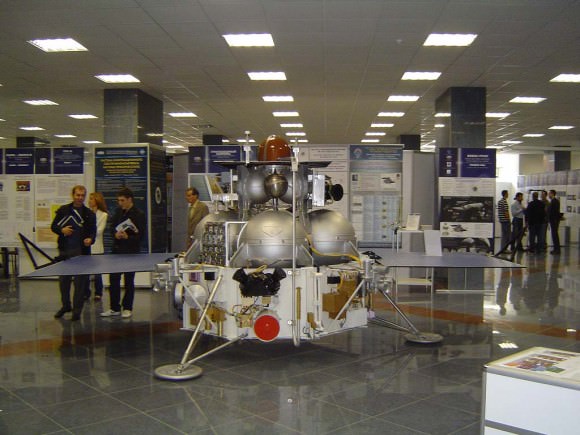
This is a full-scale mockup of Russia's Phobos-Grunt. The spacecraft will collect samples of soil on Mar's moon Phobos and to bring the samples back to Earth for detailed study. Credit: CNES
Phobos-Grunt is the first of Earth’s two missions launching to the Red Planet in 2011. NASA’s Curiosity Mars Science Laboratory is due to lift off on Nov. 25, 2011 from Cape Canaveral, Florida.
Read Ken’s continuing features about Phobos-Grunt, Curiosity and Opportunity starting here:
Daring Russian Sample Return mission to Martian Moon Phobos aims for November Liftoff
Assembling Curiosity’s Rocket to Mars
Encapsulating Curiosity for Martian Flight Test
Dramatic New NASA Animation Depicts Next Mars Rover in Action
Opportunity spotted Exploring vast Endeavour Crater from Mars Orbit
Twin Towers 9/11 Tribute by Opportunity Mars Rover
NASA Robot arrives at ‘New’ Landing Site holding Clues to Ancient Water Flow on Mars
Opportunity Arrives at Huge Martian Crater with Superb Science and Scenic Outlook
Opportunity Snaps Gorgeous Vistas nearing the Foothills of Giant Endeavour Crater
Earth Vs. Stuff from the Sun
[/caption]
The Sun is big. And comparatively, Earth is a tiny Lilliputian. We’ve all seen images comparing the size of Earth to the Sun, but here are two images from October 10, 2011 that really bring home the size-scale of features on the Sun when compared to the size of Earth. Amateur astronomer Ron Cottrell from Oro Valley, Arizona took these images of two different features on the the Sun yesterday, overlaying the size of the Earth for reference. Both are viewed in Hydrogen- Alpha light, and the first is a fiery-looking huge prominence from the northwest limb of the Sun. Yikes!
Below, see a comparison of Earth to a current sunspot:
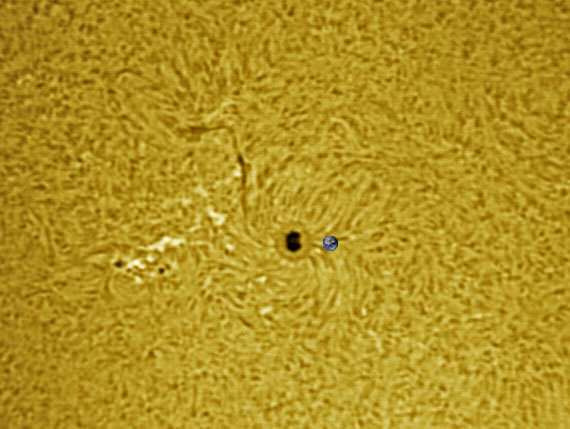
This is sunspot 1312 which has a classic sunspot shape with a core a that’s larger than the Earth.
Ron used a 40mm Coronado telescope and a webcam to capture the images. He explains the colors of the Sun in Hydrogen-Alpha, and in particular why the prominence appears fiery red:
“The red color of the prominence is very close to the color collected in the image. The yellow disk is enhanced. I actually capture the disk image in black and white and add the color. I can choose any color. The final image is a composite of two separate images. Prominences are, in general, much fainter than the bright disk. Therefore, the prominence image is captured at a slower shutter speed, e.g. 1/25 sec, compared to the disk image captured at 1/100 sec. The two images are combined in PhotoShop.”
You can see more of Ron’s handiwork on his Flickr page.
And speaking of the Sun, activity on our closest star has been ramping up and last week a series of active regions were lined up one after the other across the upper half of the Sun. Interestingly, the Solar Dynamics Observatory was able to capture how these regions twisted and interacted with each other. The video shows activity from Sept. 28 – Oct. 2, 2011, as seen in extreme UV light. The magnetically intense active regions sported coils of arcing loops and numerous times these magnetic field lines above them can be seen connecting with the active region next door. Towards the end of the clip, a leading active region blasted out a coronal mass ejection, quickly succeeded by a blast from another active region. The disruption of the magnetic field from one likely triggered the second, a phenomenon that has been observed before by SDO.
What is Airglow?
[/caption]
In many of the photos that we have featured recently from astronauts aboard the International Space Station, a glowing greenish-yellow band can be seen just above Earth’s limb. I’ve been asked before what this is, so I thought I’d explain it here. This is a phenomenon known as “airglow”.
A photochemical reaction that occurs high in the atmosphere, airglow is the result of various atoms, molecules and ions that get excited (chemistry-excited, that is… not “whee!”-excited) by ultraviolet radiation from the Sun and then release that energy as visible – as well as infrared – light when they return to their “normal” state. It’s not entirely unlike glow-in-the-dark toys or paint!
This light is most visible to the crew of the ISS when it is orbiting over the night side of the planet, and thus is seen in images like the one above. It appears like a thin band because viewing the atmosphere at a shallow angle – rather than directly down through it – increases the airglow layer’s relative visibility.
Most of visible airglow comes from oxygen atoms and molecules, which glow green… as commonly seen in the aurora. Other contributing elements include sodium and nitrogen. While present in the atmosphere at all layers, the region that glows visibly is typically constrained to a narrow band 85 – 95km (53-60 miles) high. The band itself is usually about 6 – 10km (4-6 miles) wide. The reason for this is that below those heights the atoms and molecules are more concentrated and collide more readily, releasing their energy sooner, and above it the density of the atoms is too low to do much colliding at all (to put it very simply.)
There are a lot of other factors involved with airglow as well, such as temperature and altitude, as well as different kinds of airglow depending on when in the day they occur. Nightglow is not exactly the same as dayglow, and then there’s even twilightglow… one could say there’s a lot glowing on in the upper atmosphere!
I’m here all week, folks.
You can read more about airglow in this informative article by the Institute of Astronomy and Astrophysics (Instituto de Astronomía y Física del Espacio) in Buenos Aires. Image credit: NASA.
What Would Earth Look Like from a Distant Star?
As the number of discovered extrasolar planets grows, astronomers begin looking at the next step: finding rocky Earth-like planets. In addition, astronomers would ideally like to block out the parent star and detect some of the reflected glow from the planet’s atmosphere in an attempt to characterize the chemical makeup. But what would an “Earth-like” planet’s reflected light look like? To answer this, a new paper explores what Earth should have looked like at various points in our planet’s history.
Currently, astronomers have a good understanding on how our planet reflects light. Even before satellites were launched that could observe this directly, we could see the reflected light from our home on the moon, an effect known as “Earthshine”. The amount of light reflected depends on what’s on the surface.
The paper considers five different types of reflecting materials. Water and vegetation tend to be strong absorbers of light at visible and ultraviolet wavelengths whereas ice and deserts are highly reflective. The amount of cloud cover, which also reflects a good deal of light, is the fifth.
With the modern Earth, our planet currently reflects about 32% of all incoming light. This changes by a few percent depending on the season, depending mostly on the amount of cloud cover.
This new study also analyzes what the amount of reflected light should have been for Earth, known as its albedo, during four other historical periods: the Late Cretaceous (90 million years ago), the Late Triassic (230 My ago), the Mississippian (340 My ago), and the Late Cambrian (500 My ago).
Using simulations based on the various surface features, the team from the Instituto de Astrofísica de Canarias owned by Spain, the team reconstructed the expected amount of cloud cover for these various epochs to consider their contributions to the overall albedo.
In general, the historical periods had strikingly similar amounts of reflectiveness due to “similar ocean-land-vegitation distribution” as well as similar distributions of continents between hemispheres and most deserts in low latitudes. The exception to this, was the Late Cambrian. While the average was only slightly higher, this period varied depending on which portion of the Earth was viewed.
At that time, the original supercontinent, Pangea was in the process of breaking up. They were still clustered and almost exclusively in the southern hemisphere. The sea levels were also significantly higher meaning a larger portion of land was submerged, covered by the non-reflective water. Lastly, most of the life was still concentrated in the oceans. Since it had not yet advanced to land, it is expected that the surface was mostly rocky desert terrain which would have high reflectivity. During the times when the breaking up supercontinent was facing an observer, the albedo would jump to as much as 37% only to sink to 32% when it rotated from view.
The team suggests that such a variation may allow astronomers to determine the rotation rates of planets in the future. In an ideal situation, it may even give clues to the geographical arrangement of continents.
Fires in the Sky, Fires on the Ground
[/caption]
With all of the activity that’s been occurring on the Sun recently, the aurorae have been exceptionally bright and have created quite a show to viewers – both on Earth as well as above it!
The image above was taken over the southern Indian Ocean by astronauts aboard the International Space Station. The southern lights – a.k.a. aurora australis – glow bright green and red in the upper layers of the atmosphere, creating a dazzling aerial display. (Click here to watch a movie of this.)
Shortly after, fires can be seen on the ground as the ISS passes over Australia:
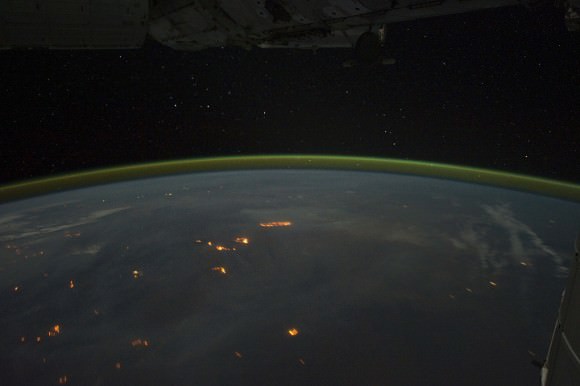
From NASA’s Earth Observatory website:
Astronauts on the International Space Station (ISS) used a digital camera to capture several hundred photographs of the aurora australis, or “southern lights,” while passing over the Indian Ocean on September 17, 2011. You can see the flowing ribbons and rays below as the ISS passed from south of Madagascar to just north of Australia between 17:22 and 17:45 Universal Time. Solar panels and other sections of the ISS fill some of the upper right side of the photograph.
Auroras are a spectacular sign that our planet is electrically and magnetically connected to the Sun. These light shows are provoked by energy from the Sun and fueled by electrically charged particles trapped in Earth’s magnetic field, or magnetosphere. In this case, the space around Earth was stirred up by an explosion of hot, ionized gas from the Sun — a coronal mass ejection — that left the Sun on September 14, 2011.
In the second image above, and in the last frames of the movie, light from the ground replaces the light show in the sky. Wildfires and perhaps some intentionally set agricultural fires burn on the continent of Australia,with smoke plumes faintly visible in the night sky. A gold and green halo of atmospheric airglow hangs above the horizon in the distance.
______________
Airglow is created by particles in the upper atmosphere that have been charged by UV light from the Sun during the day releasing the energy at night as greenish-yellow visible light.
Fires on the ground, fires in the sky… the stars blazing all around, the Sun in its full glory and a never-ending view of our entire planet… what an incredible place the ISS must be to work in! Absolutely amazing!
And the skies of night were alive with light, with a throbbing, thrilling flame; Amber and rose and violet, opal and gold it came. It swept the sky like a giant scythe, it quivered back to a wedge; Argently bright, it cleft the night with a wavy golden edge.
— “The Ballad of the Northern Lights”, Robert Service
Read more on the NASA Earth Observatory.
It Turns Out Some Borders *Are* Visible from Space

[/caption]
There is an oft-repeated and perhaps beautiful saying that you can’t see political borders from space. Well, it turns out that saying isn’t true; not anymore. ISS astronaut Ron Garan took this image recently which clearly shows the border between India and Pakistan. Since 2003, India has illuminated the border with Pakistan by floodlights in attempt to prevent ammunition trafficking and the infiltration of terrorists.
“Since the beginning of human spaceflight fifty years ago, astronauts have reflected on how peaceful, beautiful, and fragile the Earth looks from space,” Garan wrote on his Fragile Oasis blog. “These reflections are not clichés that astronauts say because it feels good. It is truly moving to look at the Earth from space.”
But seeing this clearly visible political border was sobering for Garan and his crewmates.
“Realizing what this picture depicted had a big impact on me,” he said. “When viewed from space, Earth almost always looks beautiful and peaceful. However, this picture is an example of man-made changes to the landscape in response to a threat, clearly visible from space. This was a big surprise to me.”
Garan added, however, that the point here is not that we can look down at the Earth and see a man-made border between India and Pakistan. “The point is that we can look down at that same area and feel empathy for the struggles that all people face,” he said. “We can look down and realize that we are all riding through the Universe together on this spaceship we call Earth, that we are all interconnected, that we are all in this together, that we are all family.”
Garan said he believes our world is a place where possibilities are limited only by our imagination and our will to act. “It is within our power to eliminate the suffering and poverty that exist on our planet,” he said.
Read more on Fragile Oasis.
Got Drought? Just Tow in an Iceberg
[/caption]
As an April Fool’s joke in 1978, Australian businessman Dick Smith claimed he was towing an iceberg from Antarctica to Sydney Harbour. He used a barge covered with white plastic and fire extinguisher foam in effort to convince those who gathered at the harbor to see it. Apparently, however, the idea is not such a joke after all. A team of engineers from France have studied the concept, did a simulation and found that icebergs floating around in the ocean could be tethered and towed to places that are experiencing a severe drought and water shortages.
The idea originally was conceived in the 1970’s by an graduate student named Georges Mougin, who even received some funds from a Saudi prince to test the idea, but not much came of it.
According to an article on PhysOrg, the French engineers looked into the idea and concluded that towing an iceberg from, for example, the waters around Newfoundland to the Canary Islands off the northwest coast of Africa, could be done, and would take just under five months when towed by a tugboat outfitted with a kite sail, traveling at about one knot.
The cost would be almost ten million dollars, however.
According to a simulated test, the iceberg would lose only 38 percent of its seven ton mass during the trip, if it was fitted with an insulated skirt.
Apparently Mougin is encouraged by the results and now at age 86 is trying to raise money for an actual iceberg-tow.
Read more details on PhysOrg.

